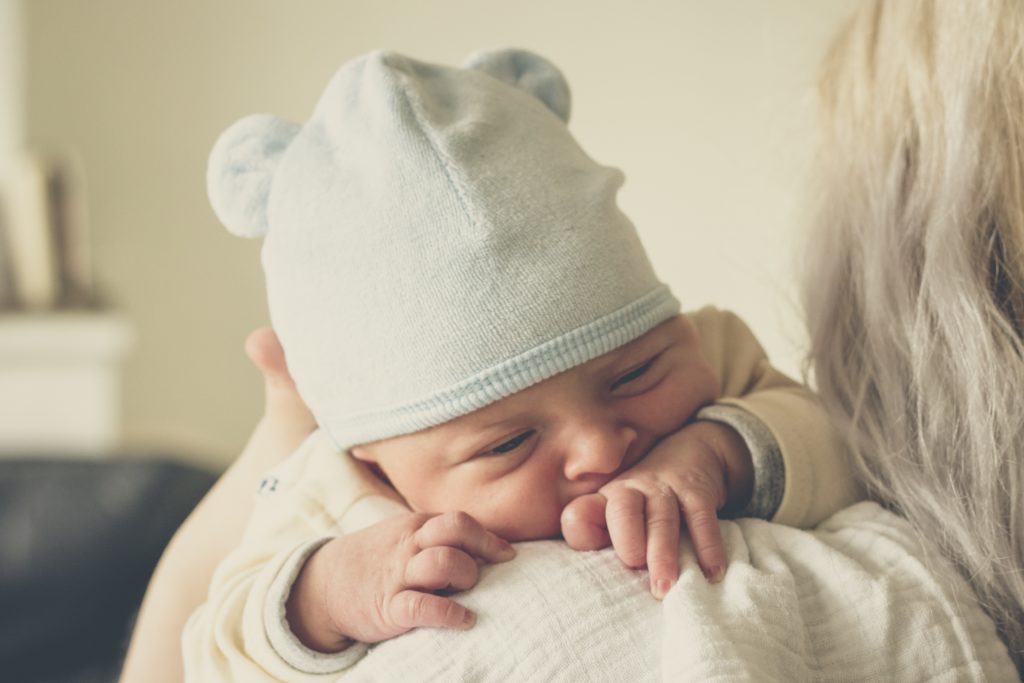Women's Health
5 Ways to Keep Your Baby Nice & Warm this Winter
Newborns may be cute, cuddly, and huggable but they’re extremely bad at regulating their own body temperature. As adults, our bodies have developed the ability to thermoregulate. This is the ability to generate heat or cool down when required. If we’re cold our body will start to shiver as a means to keep warm. If we’re hot we sweat through the pores in our body as a means to cool down. Babies and toddlers won’t develop this ability until they get older. In fact, babies can lose heat rapidly, as much as four times more quickly than adults1.
So it’s important to take a few steps to make sure your baby stays nice and warm as the weather outside gets colder.
1- The correct temperature
What temperature should you aim to keep your baby’s room at? Stanford Children’s Hospital says an ideal baby temperature is 97.7° F (36.5°C)1.
As a general guide, babies should be kept in a room at the following temperature2:
- During the day (7 a.m. to 11 p.m.) the temperature in your home should be at least 70°F.
- During the night (11 p.m. to 7 a.m.), the temperature in your home should be no lower than 64.5°F.
A good rule of thumb to follow is to dress your baby as you would dress yourself for any given temperature. If it’s usually warm in your house and you’re comfortable in cotton pants and a light t-shirt then your baby will be too2. For younger babies, consider adding an extra layer.
2- Check their temperature periodically
If you’re not sure whether your baby is too warm or cold, check whether their hands feel cold or their skin looks blotchy. Both of these are good indications that their temperature might be too low. But if your newborn looks a little restless, flushed, and red, those are signs that they may be too warm.
Check your baby’s temperature periodically because it’s always changing. This is especially true if the baby is sick or unwell.
3- Use layers
To keep your baby warm, it’s safer not to use any sort of loose or thick bedding in your baby’s crib (at least for the first year). Too much bedding can cause accidental suffocation and overheating, which are believed to be risk factors for sudden infant death syndrome, or SIDS3.
A beanie and pajamas are good choices. In general, layered clothing for sleep is best because you can easily add or remove a layer as necessary.
Layering outside
The principle of layering indoors also works if you’re taking your newborn outside. Dress them in layers and pay attention to what materials you use to layer. For example, if you do take a newborn out in the cold, use several inner layers such as a cotton snap-bottom undershirt and a fleece sleeper4.
Note: Birth to 6 weeks -When the temperature or windchill dips below freezing or when nonfreezing temperatures are mixed with wind or rain, it’s best to keep newborns inside except for brief excursions (for example, to and from the car)4.
4- Crib placement
The position of the crib in the room matters because it can affect how much heat your baby experiences. Position your baby’s crib in an ideal location. For example, keep the crib several feet away from drafty windows, air vents, fans, and heaters so that they are not directly bathing in the cool or hot air.
5- Naps and night time
Consider some of the following points for night time sleeping:
- Sleepers – These keep your baby’s toes and hands warm and when layered with a cotton onesie, they may be warm enough for a mild winter night. On extra cold nights, these pajamas layered with a sleeping bag will keep your baby toasty.
- Cotton hats – For your newborn, tiny cotton hats are a great way to keep them warm when sleeping.
- Swaddle – If you swaddle your baby, use a lightweight cloth. Cotton is the best bet for sleeping because it’s cozy, soft, and more breathable than other fabrics4.
- In the crib or bassinet – Place the crib or bassinet in the warmest room, away from windows, drafts, and outside walls as well as radiators, heaters, fireplaces, and woodstoves2.
1- Stanford children’s health. Warmth and Temperature Regulation. http://www.stanfordchildrens.org/en/topic/default?id=warmth-and-temperature-regulation-90-P02425
2- Winnipeg regional health authority. Keeping your baby warm. https://www.gov.mb.ca/health/documents/keepbabywarm.pdf
3- National Institute of Health. Unsafe Infant Bedding Use Still Common. Dec 2014. https://www.nih.gov/news-events/nih-research-matters/unsafe-infant-bedding-use-still-common
4- cnn.com. Winterproofing your baby. 12/6/2012. http://www.cnn.com/2012/12/06/living/parenting-dress-your-baby-for-winter/index.html


